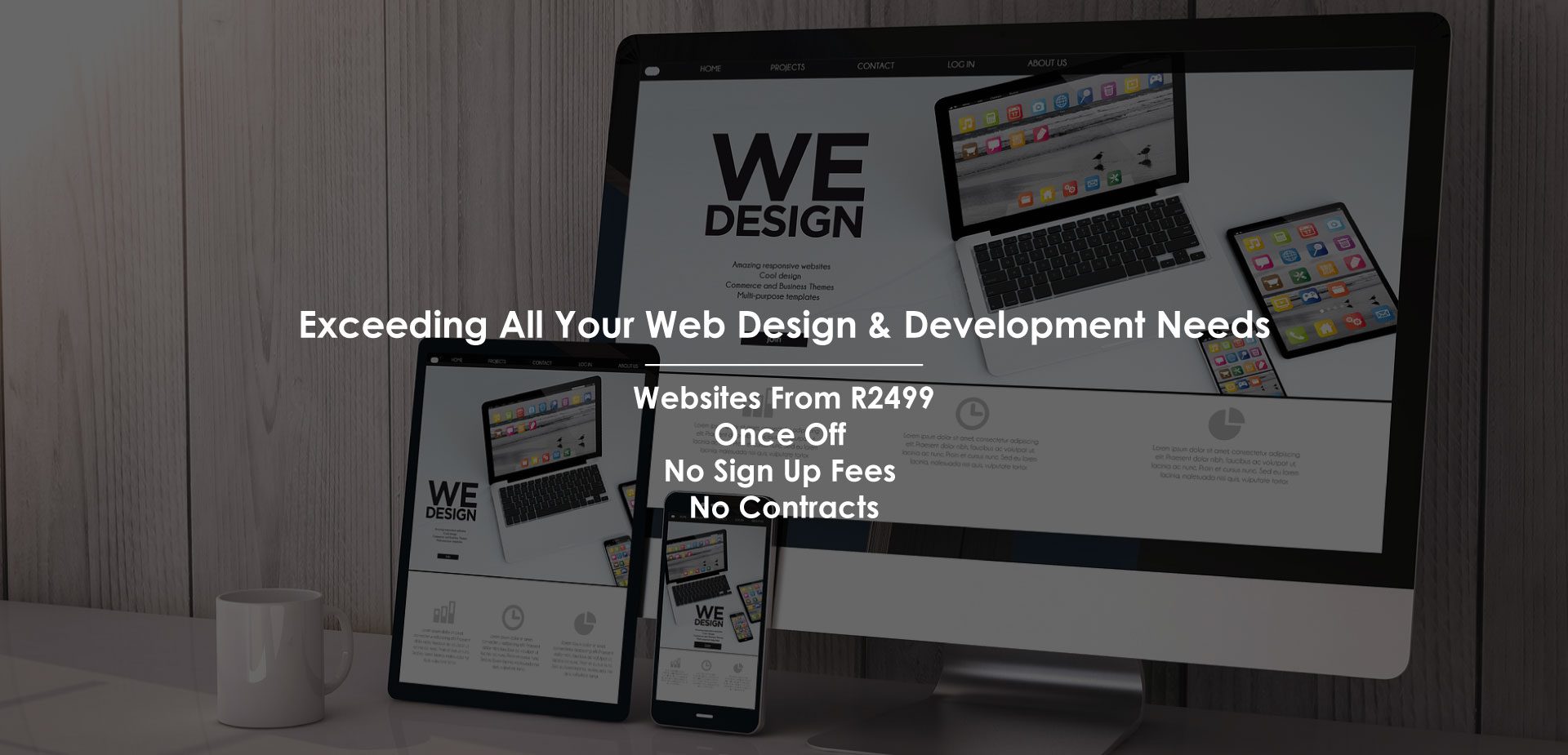The Fundamentals of Efficient Internet Style for Newbies
Efficient web layout is a multifaceted technique that significantly influences user involvement and fulfillment (Web Design Pretoria). For newbies, realizing the essentials-- such as understanding individual experience, picking an appropriate shade scheme, and making sure responsive layout-- can be daunting yet rewarding.
Understanding User Experience

Trick elements of UX include user research, which assists identify the needs and preferences of the target audience, and usability testing, which assesses exactly how real users interact with the website. Intuitive navigation, responsive design, and clear, appealing content are crucial elements that add to a positive customer experience.
In addition, the emotional feedback generated from customers during their interactions can substantially influence their perception of the brand name - Web Design Pretoria. A website that prioritizes UX fosters depend on and encourages repeat sees, eventually driving conversions and customer loyalty. For that reason, comprehending user experience is not merely an option for striving web developers; it is a fundamental concept that underpins successful electronic interactions and affects the total effectiveness of internet style.
Selecting the Right Shade Combination
Selecting the appropriate shade combination is often a crucial variable in internet style that can greatly influence user understanding and involvement. A well-balanced color scheme not just enhances the visual allure of a website however also plays an essential duty in branding and conveying the desired message.
When picking colors, consider the psychological impacts they carry individuals. For instance, blue frequently stimulates feelings of trust and integrity, while red can stimulate exhilaration or urgency. Utilize color concept principles, such as comparable and complementary color pattern, to produce aesthetic harmony.
Furthermore, guarantee that your color choices align with your target market and sector requirements. Carrying out individual research can offer important understandings right into favored color pattern that reverberate with your demographic. Additionally, preserving sufficient comparison in between message and history colors is necessary for readability and accessibility, making certain that all customers can navigate your site effortlessly.
Last but not least, uniformity is vital; utilize your color scheme uniformly across all web pages to enhance your brand name identity. By attentively choosing your shade combination, you can develop an engaging user experience that captivates site visitors and motivates them to engage with your web content.
Significance of Responsive Style
A well-designed site not just captivates with its shade palette but additionally adjusts flawlessly to numerous tools and display dimensions. Receptive layout is crucial in today's digital landscape, where webpage users access the web with a myriad of gadgets, consisting of smartphones, desktops, and tablets. Web Design Pretoria. An internet site that stops working to adjust to different display dimensions risks alienating a significant portion of its audience, inevitably resulting in greater bounce prices and reduced user engagement
Moreover, search engines like Google prioritize mobile-friendly web sites in their ranking algorithms, indicating that receptive design is not simply an individual experience enhancement yet also a vital element of reliable search engine optimization (SEO) By making certain that your website is responsive, you boost functionality, making it less complicated for visitors to navigate and connect with your content, no matter the gadget they are using.
Incorporating responsive design practices, such as fluid grids, adaptable pictures, and media inquiries, allows a web site to preserve a attractive and consistent aesthetic across numerous platforms. This flexibility not only boosts customer complete satisfaction yet also cultivates brand name trustworthiness and count on, as customers are most likely to engage with a web site that provides a seamless experience.
Navigating Typography Fundamentals
Typography plays an essential role in web layout, offering as the visual voice of an internet site's web content. It includes the fonts, dimensions, spacing, and general presentation of message, which significantly influences readability and user experience.
Next, think about font dimension and line elevation. A general rule is to make use of a minimum font size of 16 pixels for body message to guarantee clarity throughout tools. Sufficient line height, commonly 1.5 times the typeface dimension, enhances readability by providing enough area in between lines.
Prevent using also many various typefaces; a combination of 2 or 3 can produce an unified layout. Mastering typography will certainly elevate your internet style, making your site not only attractive yet additionally functional and user-friendly.

Utilizing Aesthetic Pecking Order
At the core of efficient website design lies the principle of visual hierarchy, which guides customers through more info here content in a manner that is both interesting and user-friendly. Aesthetic hierarchy describes the plan of aspects on a website to signify their value with size, contrast, shade, and placement. By employing these methods, designers can lead individuals' focus to crucial info, enhancing their overall experience.
To develop a clear aesthetic hierarchy, beginning by recognizing the most vital aspects on your web page, such as headings, phones call to activity, or images. Usage larger font styles and vibrant colors for primary headings to make them stand apart. Subheadings need to be somewhat smaller, keeping a logical circulation that guides the customer's look downward.
Furthermore, contrast plays a crucial function; contrasting shades can make essential aspects pop, while regular spacing creates a tidy format that is easy to navigate. Employing whitespace efficiently also boosts readability, allowing customers to concentrate on the web content without feeling bewildered.
Eventually, a well-implemented visual hierarchy not just improves customer interaction however likewise promotes far better comprehension, try this making it a basic facet of effective web design.
Final Thought
In recap, reliable web style for novices necessitates a comprehensive understanding of user experience, option of appropriate color palettes, and the application of responsive style. Focusing on these elements promotes an atmosphere favorable to individual involvement and contentment.

At the core of efficient internet layout lies the concept of visual pecking order, which overviews individuals with content in a method that is both engaging and user-friendly.In summary, reliable web style for beginners demands a detailed understanding of customer experience, choice of ideal shade palettes, and the implementation of responsive layout.